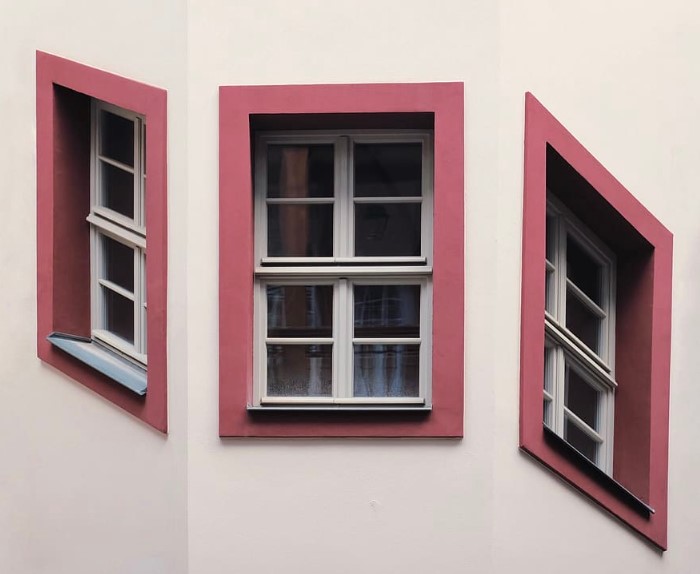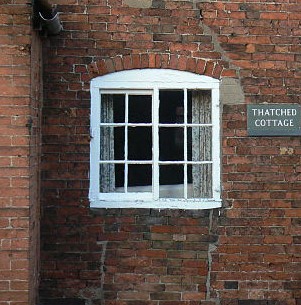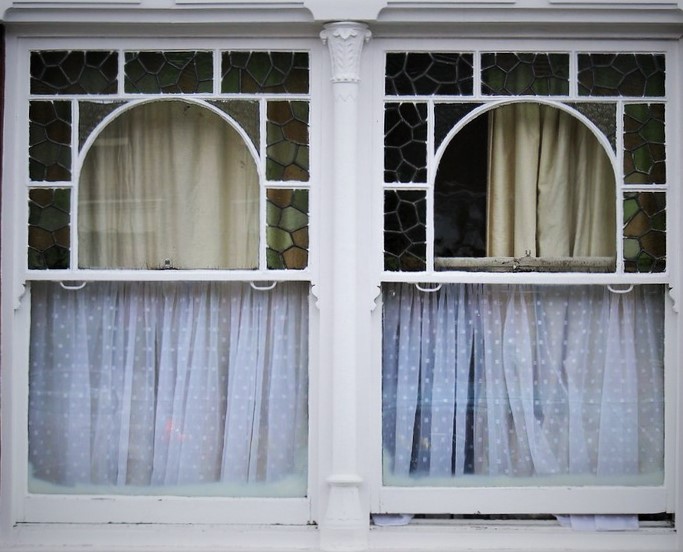Sash windows
Contents |
[edit] Introduction
Domestic windows are made from a wide range of materials and come in a many colours, finishes, sizes, shapes and opening types.
A sash is a glazed part of a window or door assembly that opens for purposes of ventilation, viewing out, access, cleaning etc. In a casement window, the sash is the hinged part of the window (within the frame) that opens outwards or inwards. It is the part which holds the glass in position in a secondary frame within the main window frame.
However, the term 'sash windows' generally refers to sliding sash windows (also known as box sash windows). This is one of the older types of window, although its exact origin is unknown and its invention is still a subject of debate.
[edit] History
A form of sash window is mentioned in England as early as the 16th century, and another variation may have appeared in France in the 1600s. Surviving examples in Britain date from around 1670, and a noteworthy example (perhaps the earliest surviving version of the vertical sash window) was found at the country palace of Charles II at Newmarket in Suffolk.
Sash windows are typically found in Georgian and Victorian buildings but are still widely used in new buildings.
[edit] Sash window characteristics
There are two types of sash windows: horizontal sliding and vertical sliding. The horizontal version is also referred to as the Yorkshire sash or Yorkshire Light. It is a simple window that slides from side to side and does not require counterbalance weights.
For more information, see Yorkshire Lights.
The vertical version consists of one or two sashes that slide vertically up and down in a frame. Vertical sash windows incorporate a system of counterweights within the frame to keep them open and to make them easier to move. The sash is the glazed part which slides vertically to open, allowing ventilation and cleaning.
Vertical sash window
Modern sash windows generally have multi-functional mechanisms that allow them to tilt or pivot open from the bottom or side. This allows them to be cleaned from inside the property.
In the United States, sash windows are referred to as hung sash window, and are double-hung windows typically found in warmer parts of the country. Because they open both at the top and bottom, they can provide increased air circulation.
[edit] Related articles on Designing Buildings Wiki
Featured articles and news
RTPI leader to become new CIOB Chief Executive Officer
Dr Victoria Hills MRTPI, FICE to take over after Caroline Gumble’s departure.
Social and affordable housing, a long term plan for delivery
The “Delivering a Decade of Renewal for Social and Affordable Housing” strategy sets out future path.
A change to adoptive architecture
Effects of global weather warming on architectural detailing, material choice and human interaction.
The proposed publicly owned and backed subsidiary of Homes England, to facilitate new homes.
How big is the problem and what can we do to mitigate the effects?
Overheating guidance and tools for building designers
A number of cool guides to help with the heat.
The UK's Modern Industrial Strategy: A 10 year plan
Previous consultation criticism, current key elements and general support with some persisting reservations.
Building Safety Regulator reforms
New roles, new staff and a new fast track service pave the way for a single construction regulator.
Architectural Technologist CPDs and Communications
CIAT CPD… and how you can do it!
Cooling centres and cool spaces
Managing extreme heat in cities by directing the public to places for heat stress relief and water sources.
Winter gardens: A brief history and warm variations
Extending the season with glass in different forms and terms.
Restoring Great Yarmouth's Winter Gardens
Transforming one of the least sustainable constructions imaginable.
Construction Skills Mission Board launch sector drive
Newly formed government and industry collaboration set strategy for recruiting an additional 100,000 construction workers a year.
New Architects Code comes into effect in September 2025
ARB Architects Code of Conduct and Practice available with ongoing consultation regarding guidance.
Welsh Skills Body (Medr) launches ambitious plan
The new skills body brings together funding and regulation of tertiary education and research for the devolved nation.
Paul Gandy FCIOB announced as next CIOB President
Former Tilbury Douglas CEO takes helm.
UK Infrastructure: A 10 Year Strategy. In brief with reactions
With the National Infrastructure and Service Transformation Authority (NISTA).


























Comments